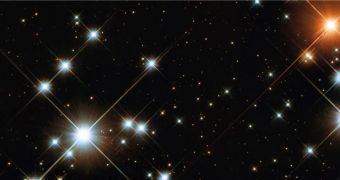The Jewel Box star cluster, also known as NGC 4755 or the Kappa Crucis Cluster, is one of the finest open star clusters discovered thus far in the Universe. It lies in the southern-hemisphere constellation of Crux, and it's located some 6,400 light-years away from Earth. The formation is one of the most important discovered by astronomer Nicolas Louis de Lacaille, who saw it during his trips to South Africa, between 1751 and 1752. Now, with the help of three of the world's most renowned telescopes, the Jewel Box gets a new picture, one of the most detailed to date.
Famous English astronomer John Herschel gave it the name of Jewel Box in the 1830s. The cluster is just bright enough to be seen with the unaided eye during a clear night. One reason for its name is the contrast that is visible between its pale blue and orange stars, as seen through astronomical telescopes. These colors reminded Herschel of some exotic jewelry that he had seen at some point. Structures such as this one are a gold mine for astronomers, as all stars were formed from the same gas-and-dust cloud and have, therefore, about the same age and brightness. Kappa Crucis is about 16 million years old.
Usually, clusters are formed from anywhere between a few and several thousand stars, all of them bound together by a loose gravitational force. The new image that got astronomers all excited has been created by superimposing data collected by the famous NASA/ESA Hubble Space Telescope, the Very Large Telescope in Cerro Paranal, operated by the European Southern Observatory (ESA), and the MPG/ESO 2.2-meter telescope at the ESO La Silla observatory, in Chile. The cluster is also visible in the very wide field view of the Milky Way, generated from Digitized Sky Survey 2 data.
“The Jewel Box may be visually colorful in images taken on Earth, but observing from space allows the NASA/ESA Hubble Space Telescope to capture light of shorter wavelengths than can be seen by telescopes on the ground. This new Hubble image of the core of the cluster represents the first comprehensive far ultraviolet to near-infrared image of an open galactic cluster,” ESA reports on a special page dedicated to the Hubble telescope.
“It was created from images taken through seven filters, allowing viewers to see details never seen before. Several very bright, pale blue supergiant stars, a solitary ruby-red supergiant and a variety of other brilliantly colored stars are visible in the Hubble image, as well as many much fainter ones. The intriguing colours of many of the stars result from their differing intensities at different ultraviolet wavelengths,” the agency adds.

 14 DAY TRIAL //
14 DAY TRIAL //